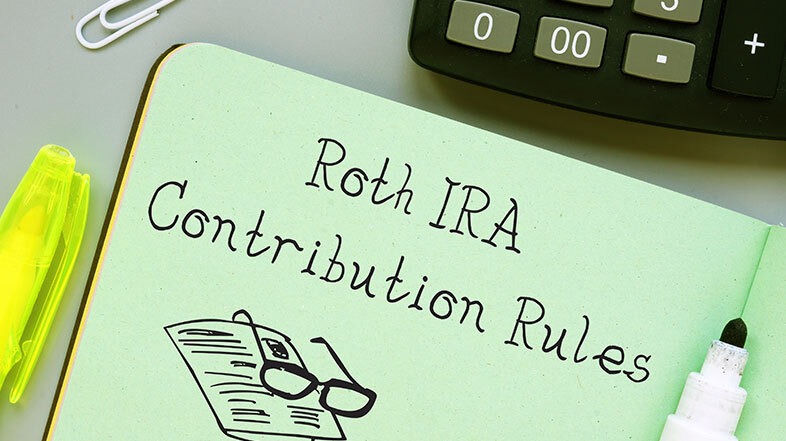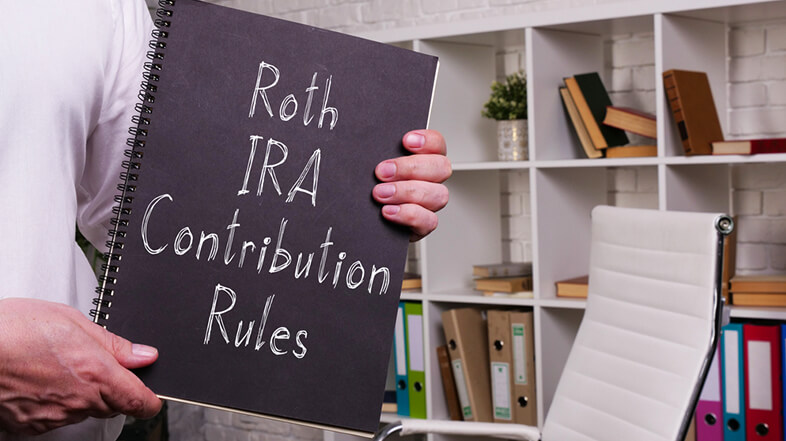
Roth 401(k): Here’s What You Need to Know
Planning for retirement includes taking into consideration taxes come retirement. And, to avoid a retirement tax bomb later on, many investors are opting for the 401(k) Roth provision.
If your employer offers a Roth 401(k) provision, you can enroll in both the traditional 401(k) plan and take advantage of the Roth provision, which allows you to withdraw money in retirement tax-free.
Keep reading to find out more about the Roth 401(k), key benefits, and also key rules.
Defining the Roth 401(k)

The Roth 401(k) is a provision inside the traditional 401(k) that is funded with after-tax dollars.
The Roth 401(k) hasn’t been around too long – it came into effect on January 1, 2006.¹ But it’s gaining in popularity as more people are looking to avoid a tax bomb when they retire.
According to the U.S. Bureau of Labor Statistics, “The plan, commonly referred to as a ‘Roth 401(k)’, is a hybrid that combines features of Roth IRA and traditional 401(k) plans but differs in important aspects. […] Employees who already have a regular 401(k) plan can participate in a Roth 401(k) if the employer offers it.”²
Similar to traditional 401(k) plans, a Roth 401(k) is also subject to contribution limits.
Benefits of the Roth 401(k)

The key difference between the traditional 401(k) and the Roth 401(k) is that the Roth provision allows you to contribute after-tax money to your 401(k).
You pay taxes now on the money before you put it into your 401(k) so it grows tax-free, and then you withdraw the money in retirement tax-free.
Even though a big selling point for contributing to a traditional 401(k) plan versus other retirement vehicles is often the tax break you get upfront, paying a tax on the contributions today with a Roth 401(k), where all the growth is tax-free in the future, may likely be worth it come retirement.
Roth 401(k) Rules

A key rule you need to be aware of is that, if you want to avoid paying taxes in the future on your Roth 401(k) funds, you must hold the account for more than 5 years and be age 59½ or over.
Note that tax-free withdrawals are also allowed for certain extenuating circumstances, such as death or permanent disability; however, you must have held the Roth for more than 5 years.
You can participate in both a traditional and Roth 401(k) plan – it doesn’t have to be one or the other. The only rule to keep in mind is that you cannot exceed contribution limits.
The Roth 401(k) contribution limit is $22,500 in 2023. For those age 50 and older, the 401(k) catch-up contribution is $7,500 in 2023 – for a total of $30,000. This limit is combined with your traditional 401(k).
The Roth 401(k) plan also requires you to take distributions starting at 72 years of age.
Finally, only the amount you contribute to the Roth 401(k) goes in after-tax. If you have an employee match, this matched money is treated like a traditional 401(k) and goes in pre-tax.
The U.S. Bureau of Labor Statistics explains, “If an employer provides a matching contribution to a Roth 401(k), two accounts are set up for each participant. The first contains the employee’s after-tax contributions that will be distributed tax free. The second account contains the employer’s before-tax contributions and any investment growth; these funds are taxable when distributed.”³
Hear What Founder and CEO of 401(k) Maneuver, Mark Sorensen, has to say about Traditional Vs Roth 401(k)s. Watch the video below.
Have questions or concerns about your 401(k) performance? Click below to book a complimentary 15-minute call with one of our advisors today.
Book a 401(k) Strategy Session
Sources:
- https://www.bls.gov/opub/mlr/cwc/another-retirement-savings-option-roth-401k-plan.pdf
- https://www.bls.gov/opub/mlr/cwc/another-retirement-savings-option-roth-401k-plan.pdf
- https://www.bls.gov/opub/mlr/cwc/another-retirement-savings-option-roth-401k-plan.pdf








